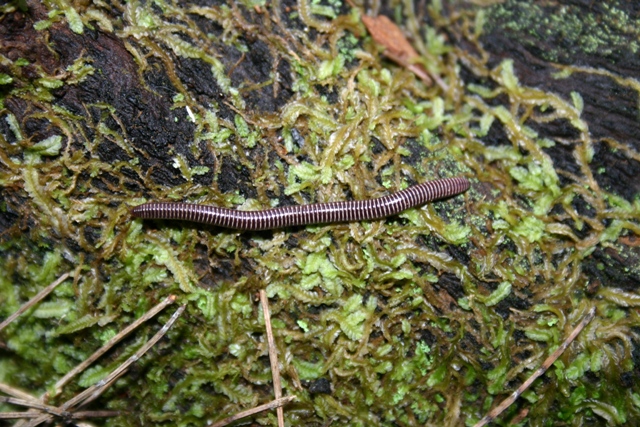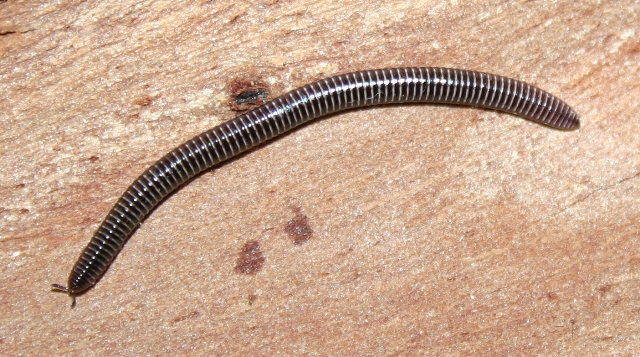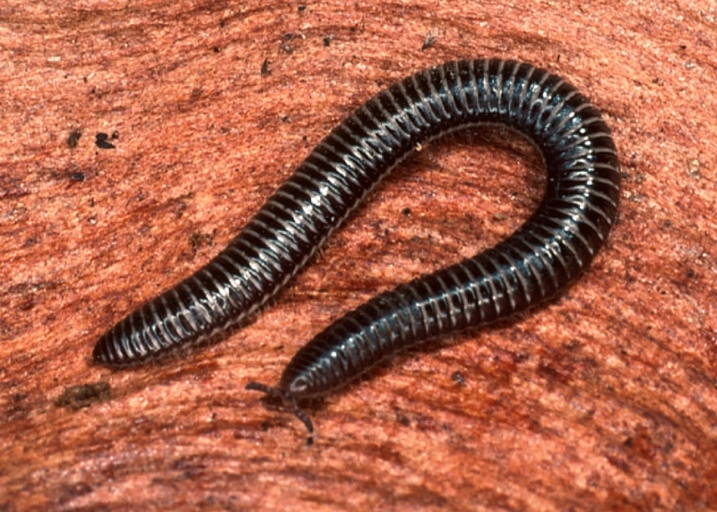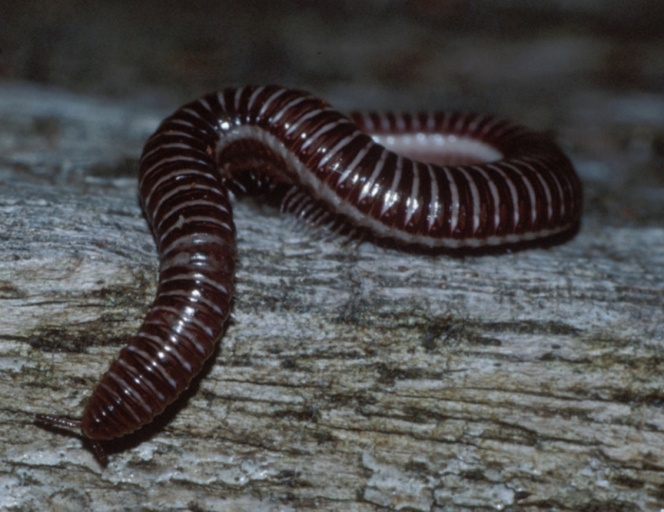Phylum Arthropoda
Subphylum Myriapoda
Class Diplopoda
Order Polyzoniida
Common name: sucking millipedes, polyzoniid millipedes
Overview
Polyzoniid millipedes have elongated bodies, and are usually less than 1 cm in length, but sometimes attain a length up to 3 cm. Like the Siphonophorida, polyzoniids have a semicircular cross-section (dorsally convex and ventrally flattened) and reduced mouth parts in a beak-like structure. Polyzoniida differ from Siphonophorida in several important aspects, including the possession of fewer than 50 body segments, and the presence of one or two pairs of eyes that are ringed by dark pigment, which provides marked contrast to the pale body. The head is very small relative to the body, when compared to other millipede orders, and is used to push their way into crevices in soil and logs. They are able to roll into a loose ball or spiral, but are unable to form a tight ball like the pill millipedes.
Distribution and Diversity
The order Polyzoniida has a nearly worldwide distribution and currently comprises two suborders and three families. There are 127 species described worldwide and five species in Australia.
Life cycle
The male gonopods, which are leg-like on segment VII, enable the transfer of sperm into the female gonopore. Eggs are laid in soil or logs and females brood their eggs, which is unusual behaviour in millipedes. Juveniles have three pairs of legs upon hatching, an additional body segments and legs are added at later moults until the full adult complement is reached.
Feeding
Their small, triangular heads contain modified mouthparts, which enable them to pierce algae and rotting plants. The fluids are then sucked into the mouth with a strong pumping action exerted by powerful muscles.
Ecology
Polyzoniidans can be found in leaf litter, in rotting logs and under bark, logs and stones. They occur in the wetter forests in eastern and south-western Australia and Tasmania. Several polyzoniids congregate in small, single-species groups.

Polyzoniida from Walpole, Western Australia
Image credit: Photographer: Mark Harvey
� Western Australian Museum

Polyzoniida from Walpole, Western Australia
Image credit: Photographer: Mark Harvey
� Western Australian Museum

Polyzoniida
Image credit: Photographer: E.S. Volschenk
� Western Australian Museum

Polyzoniida
Image credit: Photographer: E.S. Volschenk
� Western Australian Museum










